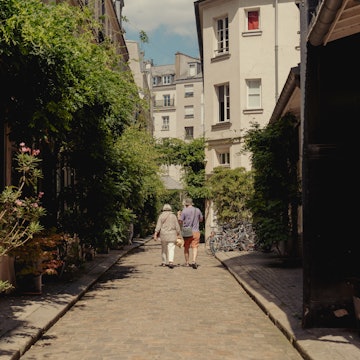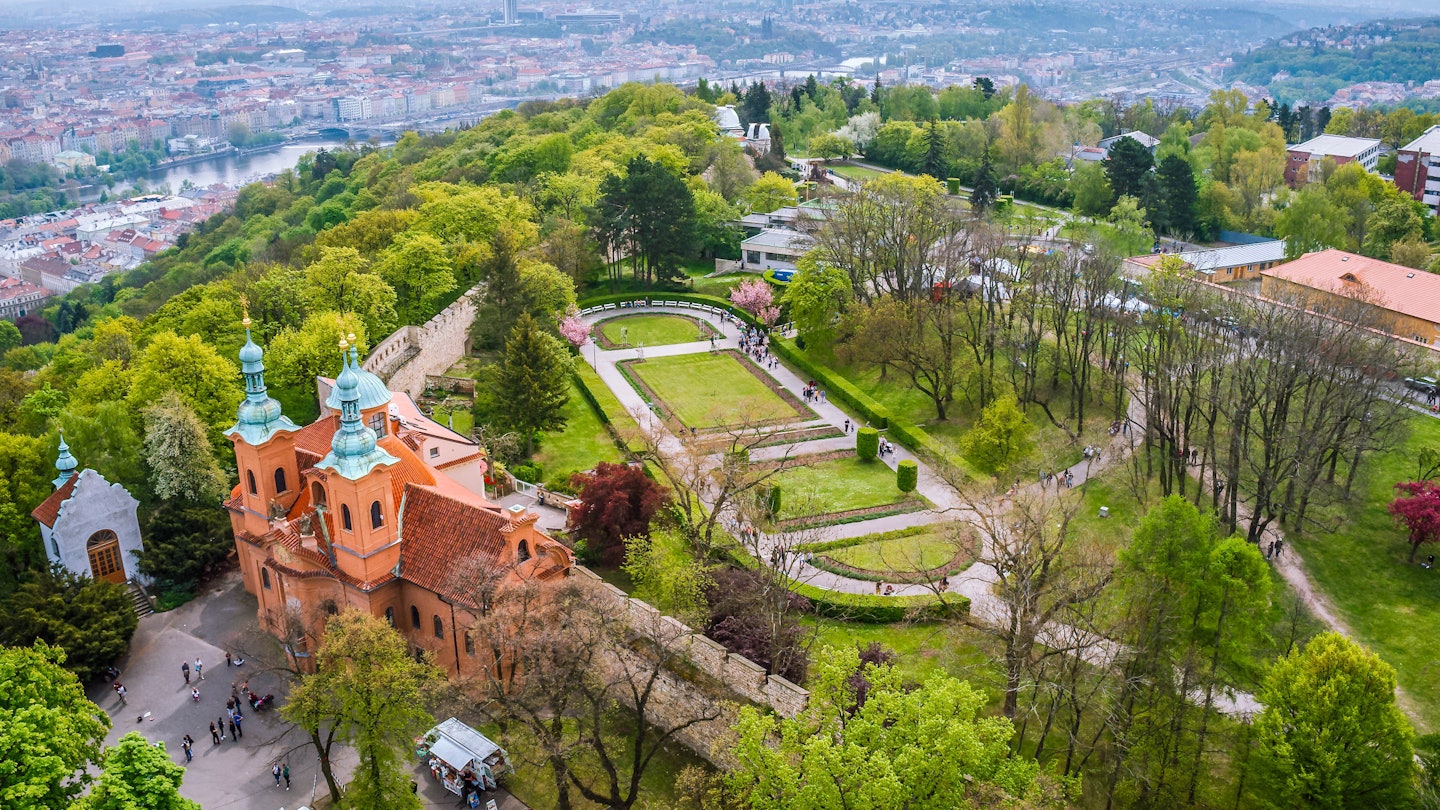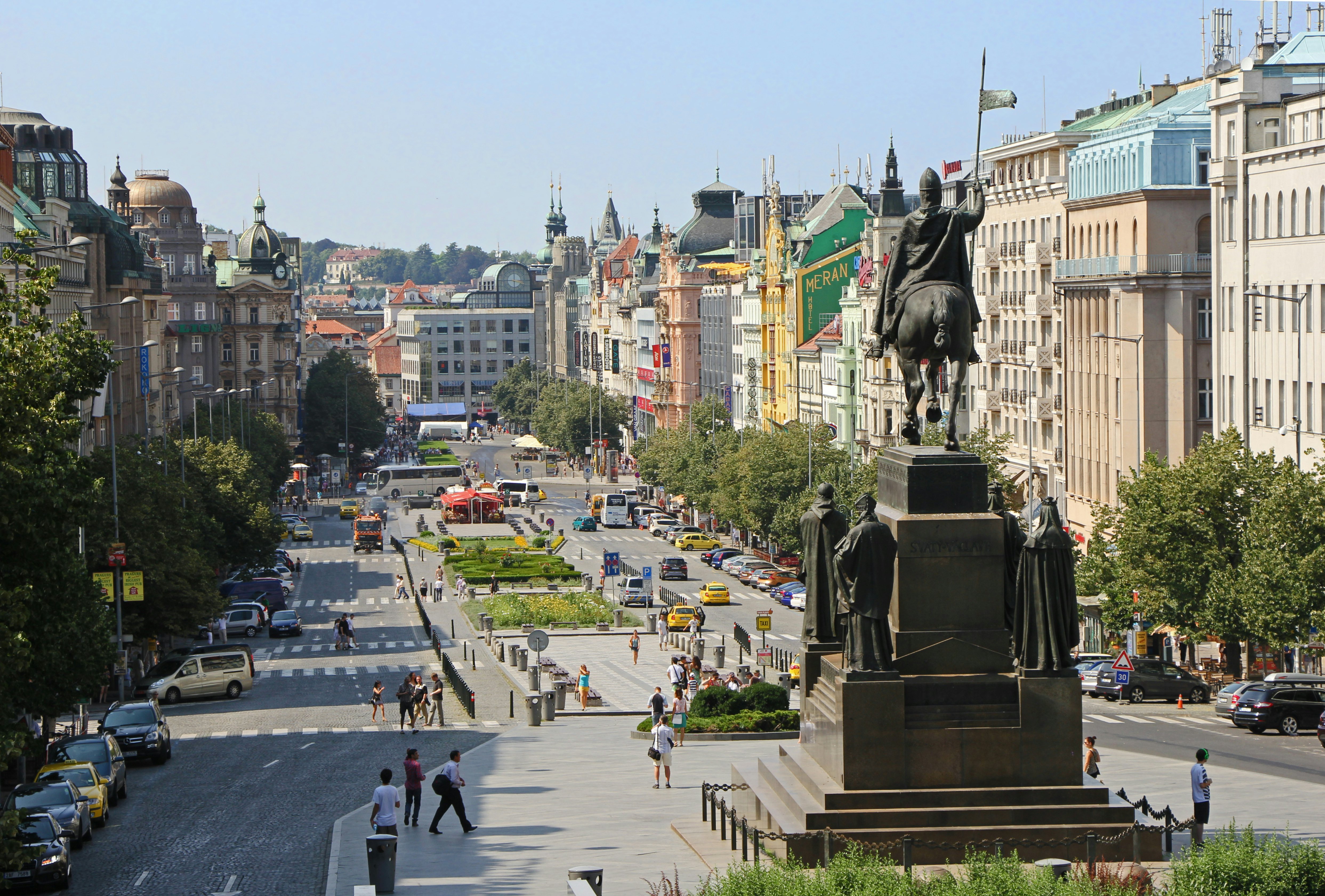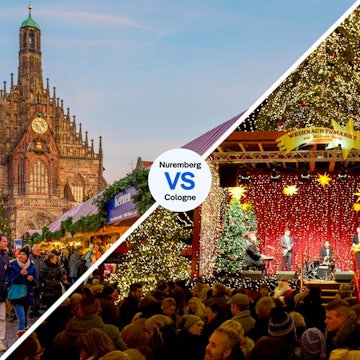

View of Prague from Petrin Hill Tower. fotosolutions/Shutterstock
The good news for travelers is that Prague is a stunningly beautiful European capital. It's the pride of Czechia with gasp-inducing art and architecture tucked around every corner and town square.
The slightly less good news is everyone wants a piece of that prettiness. Countless feet cross the cobblestones and wander through churches and museums every year, and queues form to take in the breathtaking view of Prague Castle from statue-lined Charles Bridge. During the height of the peak tourist season, the city's medieval charm can evaporate as quickly as your drink on a hot day when those pretty backstreets are suddenly crammed with visitors.
Luckily, there is joy to be found during every season, and timing a visit to sync perfectly with your wish list will ensure you experience just how magical Prague can be.

June to August is high season when it's hot, sunny and crowded
Weather in Prague in summer: June brings plenty of sunshine, but without being uncomfortably hot. As July hits, daytime highs reach the mid-30°Cs (upper 80°Fs and 90°Fs).
Most visitors come during Czechia's short summer, when the weather is warm and the days reliably sun-drenched. All the attractions are open, parks and gardens are in full bloom, cafes and restaurants have outdoor seating, and daylight stretches as late as 10pm near the summer solstice. The downside is that Prague is packed to the rafters. Expect higher prices for lodging and meals, and long waits to see A-list sights like St Vitus Cathedral and the Prague Jewish Museum.
The city empties out the first week of the month as locals decamp to summer cottages to enjoy the public holidays of St Cyril and Methodius Day (July 5) and Jan Hus Day (July 6). In August, which continues to be hot, thousands of people from around Europe come to attend the annual Prague Pride Festival, a week of parties and happenings at venues across the city.
If you're visiting during these high-season months, double-check your accommodations have air-conditioning – not everyplace does.

April to May and September to October are better times to visit
Weather in Prague in spring and autumn: There are quite a few sunny days and relatively warm weather in spring and autumn in Prague (though bring a jacket and umbrella just in case). In May, days are comfortably warm but the nights are cool. September brings the best of all worlds: warm days but without the summer crowds. But be prepared for the first cool rains of the year. Days grow noticeably shorter and cooler through October, but it's still a good time to visit, particularly for lovers of live performances.
The spring and autumn months draw fewer crowds to Prague, and April and May are particularly beautiful as trees and flowers bud and bloom. Book in advance during the busy Easter holiday—the unofficial beginning of the tourist season—when a festive, three-week Easter market takes over Old Town Square. On May 1, couples traditionally climb Petřín Hill to toast their romance with flowers. The city’s ambitious festival season kicks off in mid-May with the annual Prague Spring Music Festival, the high point of the cultural calendar.
In September, the familiar rhythms of city life return as schools start up and theaters and concert halls reopen. Sidewalk cafes remain open as long as the weather holds. In October, the concert and theater seasons are in full swing, and this is the best month to hear classical music or opera.

November to March is best for budget travelers
Weather in Prague in winter: The pace slows considerably through the winter months, which bring on weeks of gray skies and cold, rainy and (occasionally) snowy weather. Winter snows start to fall in December. Some parks and gardens close for the season, though most attractions and museums remain open year-round. March continues to be overcast and chilly, possibly with snow, but it also sees the first shoots of sunshine that remind us that nicer days are coming.
Lower prices for hotels, fewer throngs on the squares, the undeniable delights of a cozy Prague pub and the chance to see Charles Bridge covered in snow help make up for the cold temps and midafternoon darkness. November marks the start of winter, and on All Souls Day (November 2) locals visit cemeteries to lay flowers and light candles. The cool, dark evenings are tailor-made for a night in the pub. Book restaurants in advance on St Martin’s Day (November 11), when chefs traditionally scrap normal menus in favor of plates of roast goose and dumplings. Big Christmas markets on Old Town Square and Wenceslas Square get rolling, running through to New Year’s.
New Year’s Eve festivities on Old Town Square linger well into the early morning of January 1; later in the day, the city holds its annual fireworks display. In February, residents tend to leave the city for ski holidays or huddle in pubs or cafes. The winter blues are broken up by annual Mardi Gras festivals – Masopust in Czech – where people come out onto the streets in costume to sing, parade and roast pigs. The popular Saturday morning farmers markets around the city, including the best-known one at Náplavka on the Vltava, start up by midmonth.














